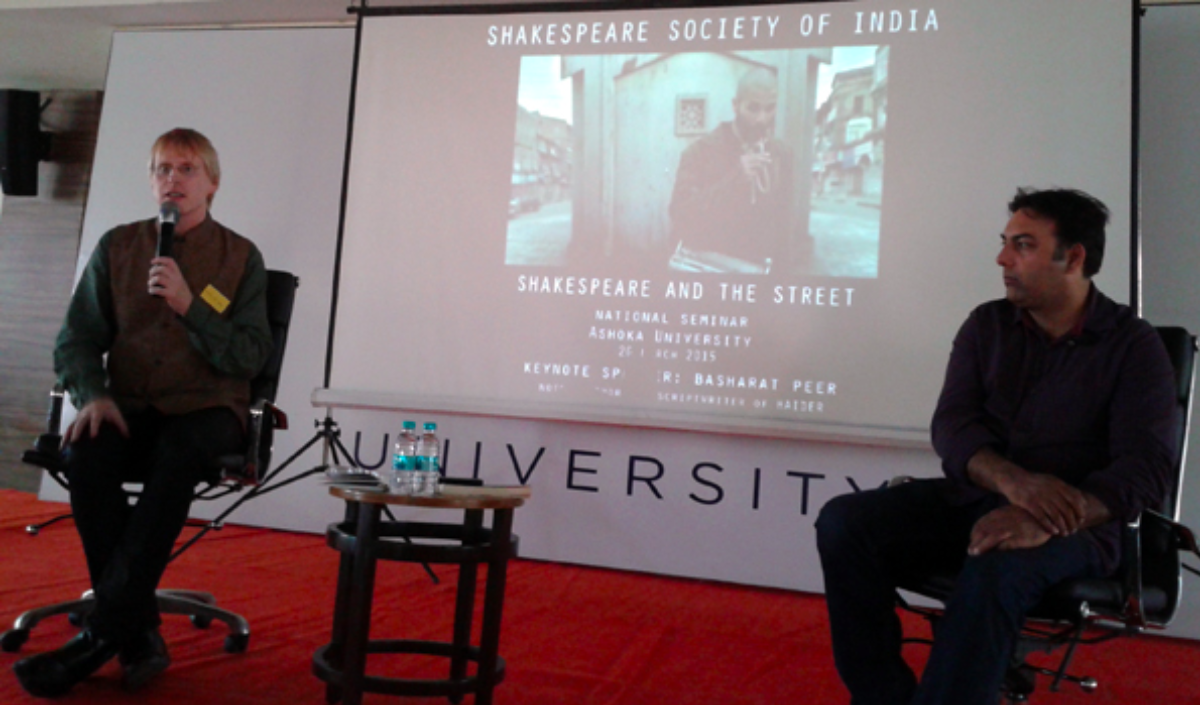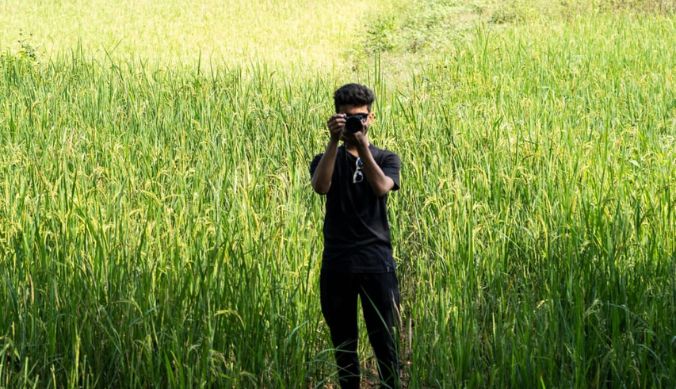The Streets of Shakespeare
Ishanika Sharma writes about the high points of the National Seminar of the Shakespeare Society of India (SSI) hosted at the University including a talk by keynote speaker Basharat Peer.

Office of PR & Communications
21 March, 2015 | 5 Mins readThe morning of 20th March was much awaited by all Shakespeare lovers at Ashoka University. The new liberal arts University based in Kundli, Sonepat played host to the national seminar of the Shakespeare Society of India (SSI), centred on the theme of ‘Shakespeare and the Street.’
The seminar was the product of a number of academic papers presented by some of the best Shakespeare scholars in the country. It also featured an Urdu adaptation of Julius Caesar by Zakir Hussain College and street scenes from Twelfth Night by Ashoka University. The highlight of the event was the highly anticipated talk by the keynote speaker Basharat Peer, author of the acclaimed memoir Curfewed Night and script-writer for the Bollywood movie Haider.
Attended by a mix of respected scholars and interested students, the seminar considered how Shakespeare’s playhouse was no stranger to the streets. From the streets of Verona in Romeo and Juliet to those of Rome in Julius Caesar, Shakespeare was adept at adapting his stage to the outdoors. In the words of Professor Jonathan Gil Harris, the President of the Shakespeare Society of India and the Dean of Academic Affairs at Ashoka, “Shakespeare repeatedly breaks the illusion of the performance through the incorporation of street scenes. Shakespeare used the street as a critical setting in many of his plays, and it encompassed many forms of social interaction, contradiction and tension.”
In the sessions prior to Basharat Peer’s talk, the seminar papers and discussions repeatedly returned to Haider, Vishal Bhardwaj’s final addition to his Shakespearean trilogy. After Maqbool and Omkara, Haider’s release was perhaps of one the greatest Shakespeare adaptations in recent years. It was not only a cinematically beautiful but also a politically-charged drama. When the dark interiors of Hamlet’s Denmark were tailored to fit the physically and politically grey streets of Kashmir, the result was bound to be explosive. As an adaptation of Hamlet, the movie draws from Basharat Peer’s experiences of the political climate of 1990s Kashmir.
In his interaction with the audience, Basharat Peer talked about the famous street scene from the movie in which the titular character performs a street theatre scene at the historic Lal Chowk of Srinagar. Peer remarked upon the way Hamlet’s iconic soliloquy, “to be or not to be,” was transformed into a routine performed by Haider on the street. Hamlet’s brooding interiority is superseded by the exterior setting of the Chowk and its large street audience, producing an enthralling effect.
According to Peer, another way in which Haider work with street scenes is when a crackdown takes place in the village in the opening sequence. He explained further by saying that the scene portrayed the disappearance of identities, as young boys and men stepped onto the streets with their passports and walked towards oblivion.
As a student of literature under the tutelage of Professor Gil Harris, it was fascinating to critically examine the movie for such metaphors. The talk was widely attended not just by Shakespeare aficionados but also by a sea of fans of Peer’s works, movie-buffs and those interested in the politics of the Kashmir Valley. The national seminar of the Shakespeare Society of India drew to a close with a rejuvenated awareness of how literature interacts with life.
(The writer is a student of the founding undergraduate batch at Ashoka)












